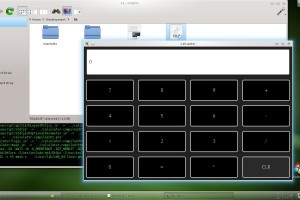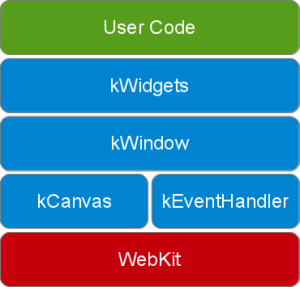Introduction
Yesterday was the second reading for the Accepting Schools Act (Bill 13), the anti-bullying legislation introduced by the Liberal Party of Ontario.
The provisions in the bill would create a “bullying awareness and prevention week”, grant the Minister the ability to put a policies and guidelines to deal with bullying, and also the following:
Every board shall support pupils who want to establish and lead,
(a) activities or organizations that promote gender equity;
(b) activities or organizations that promote anti-racism;
(c) activities or organizations that promote the awareness and understanding of, and respect for, people with disabilities; or
(d) activities or organizations that promote the awareness and understanding of, and respect for, people of all sexual orientations and gender identities, including organizations with the name gay-straight alliance or another name.
Unfortunately, there is a very vocal force opposing the introduction of this bill. Now I don’t pretend to fully understand those who reject this anti-bullying legislation. That said, I have tried to read the statements written by the detractors to get a better insight into their objections.
There’s a few things to take away from this opposition. First of all, it exists because the anti-bullying legislation also covers discrimination on the basis of sexual orientation and gender identity. If that inclusion wasn’t there, you wouldn’t have these groups make a ruckus.
To that extent, this opposition is entirely religious in nature, including not just adherents of the Catholic faith but other religions as well. This is not all that surprising since faith-based groups have historically opposed measures of acceptance for LGBT folk. Let us not forget that this bill partly owes its existence as a reaction to the much-publicized ban by Catholic schools on support groups for LGBT students.
It would be unfair to group these opponents together, though there are a few discussion points I’ve seen crop up over and over. One is the concept that in the case of students from sexual minorities, there is such a thing as just discrimination. The other is this idea that they fear the normalization of homosexuality (in other words – acceptance.) This latter notion seems ideologically-tied to the concept of the fictitious homosexual agenda, the queer equivalent of The Protocols of the Elders of Zion.
There’s unfortunately little middle ground here with that kind of rhetoric. One side is arguing against the acceptance of certain students as equals because of the minority to which they belong, while the other wants those same students to be treated as equals. As this anti-bullying legislation is incompatible with the continued “just” discrimination against a minority, so the religious leaders appear to be saying, it cannot be allowed to succeed.
Bill 13: Second reading
You can read a full transcript of the second reading here. Starting the day was a petition to kill the anti-bullying bill by the religious Parents As First Educators:
To the Legislative Assembly of Ontario:
Whereas, as an anti-bullying measure, Bill 13 is unnecessary because Ontarians already have Bill 157; and
Whereas Bill 13 promotes radical revisions to school instruction on sex and gender that a majority of parents do not support; and
Whereas legislation is not the way to implement equity education (this should rather be addressed by teacher training, after wider parental consultation, in a way which respects the views of people of faith);
We, the undersigned, petition the Legislative Assembly of Ontario to vote against Bill 113.
A member for the Progressive Conservative party, meanwhile, appeared to suggest that the opposition would not support Bill 13. Or in parliamentary-speak:
We believe that Bill 14, which has been brought forward by my colleague, is the more comprehensive bill, and that’s what we’ll be supporting.
Bill 14 is the competing anti-bullying legislation tabled by the Progressive Conservative. It was introduced the same day as Bill 13, and unlike the latter, makes no reference to orientation or any other basis for discrimination, but rather focusing on acts. Education critic for the opposition, Lisa MacLeod explained why she believed her party’s bill was superior, and accused the Liberals of not negotiating in good faith with her party in coming up with a joint solution.
The PC’s bill language does nothing to confront prejudice that’s from the board-level, and so the bans on support groups for LGBT youth would continue if they succeeded in supplanting Bill 13. I do believe this omission is why they introduced the legislation – so as to protect the discriminatory policies of the Catholic schools, which their supporters see as a matter of “freedom of religion, expression and thought“.
The NDP meanwhile stated that they disagreed with the PC’s approach of placing all the blame on the bully while ignoring the environmental factors that lead to those behaviours. They backed Bill 13, but saw it as being in need of improvements.
The member speaking for the NDP, Peter Tabuns, also spoke of the GSA issue:
As contentious as they may be, there is another issue that has taken on much more profile, and that takes me to the whole question of student clubs to reduce bullying, the most contentious section of this bill—and that is because one section has to do with the formation of gay-straight alliances in schools. This is the part of the bill that helps to address two issues: cultural change and building support networks for those who are under attack.
Culture change—because when authorities recognize and respect groups that are under attack, that are subjected to abusive action, it changes the dynamic of power. When authorities show respect for girls, when authorities show respect for those who have different skin colour, show respect for those who are disabled, show respect for our gay youth, that helps to shift the culture as much as the principal of my school coming in to talk to my class when I was in grade 3. It says the ground has to move. Allowing students in schools, under the sanction of the administration, to set up clubs says to all students that those students deserve respect; that the authorities in charge of the schools and the education system believe that those students deserve respect. Allowing students in schools to set up support networks gives them the security of being together and reduces the isolation that we all know can be, literally, deadly.
He read off the provision I quoted in the introduction, and talked about how clubs dealing with gender, racism, and disability issues are in great need here in Ontario. He continued:
That takes me to the last category in this subsection of the bill: “(d) activities or organizations that promote the awareness and understanding of, and respect for, people of all sexual orientations and gender identities, including organizations with the name gay-straight alliance or another name.”
Everything that has been seen to be true for other responses to oppression based on gender, racism or ability is true when we come to sexual orientation. Yet, as you are well aware, Speaker, this is the most contentious item of the bill. We’ll explore that, I am sure, as we go further through debate and through committee.
This bill supports formation of equity-promoting groups for gay and lesbian students but does not require school boards to allow students to determine the most appropriate name for the committee. Speaker, I think that is a change that is going to be necessary, to give the students the right to determine the names of their committees. This lack runs counter to the aim of creating schools which are accepting of all students and of stopping prejudice and discrimination.
Egale Canada says “GSAs … demonstrably improve the lives of” lesbian, gay, bisexual, transgendered and questioning “youth, increasing safety and improving their self-esteem.”
By simply existing, GSAs present students “with the idea that LGBTQ identities have a place in the school, and society at large. Directly engaging LGBTQ youth and their allies within school, as well as those who are ambivalent regarding” those “themes, is an excellent means towards addressing school climate, isolation and promoting social connectedness….”
A recent study in California found GSA presence and participation in high school to be highly correlated with decreased depression, substance abuse and lifetime suicide attempts among LGBT young adults.
Now we started off this afternoon with the member from Nepean–Carleton talking about the tragic death of Jamie Hubley. I have to say his death was not one that was so rare that we could say there was no pattern. I wish—and this is tragic to say—I wish it was that rare.
In the Toronto Star last December, Antonia Zerbisias wrote about Support Our Youth, an organization in Toronto on Sherbourne Street that supports gay youth. In her article, she talked about how children are bullied and how gay children tend to be particularly picked out for abusive treatment.
She notes in her article: “‘Numerous studies suggest that among lesbian, gay and bisexual youth, approximately 32 per cent contemplate or attempt suicide (compared to 7 per cent of all youth)’ says a recent analysis by Toronto’s Centre for Addiction and Mental Health.” Those are very high numbers, Speaker. Those are numbers that every person in this room should keep in mind as we debate this bill, because the simple reality is that we’re dealing with decisions that will affect life and death of our young people. Researchers and advocates say that “it’s not their sexuality that leads these kids down a suicidal path—it’s the stigma and discrimination they face in a heterosexual world…. Jamie Hubley, 15, killed himself” last fall. “Orangeville girlfriends Jeanine Blanchette, 21, and Chantal Dube, 17, were found in a wooded area in 2010, apparently after committing suicide with pills.
“In 2007, 13-year-old Shaquille Wisdom hung himself the day after he was stuffed into a garbage can at his Ajax high school. His homophobic bullies have never been outed—or punished.”
All of us have a responsibility to protect our children no matter what colour they are, what gender they are, no matter what their gender orientation. All of us in this building, in this chamber, who have power, authority and responsibility have to protect our children. Speaker, we cannot abandon children to their fate; we have to act.
Bill 13 could be enhanced by incorporating elements of the Conservatives’ anti-bullying private member’s bill. Elements around public reporting, enhanced staff training, inclusion in curriculum, alternative programming—all those need to be taken into account as we get into committee, and everything that is going to advance the protection of children in this province that is incorporated in that private member’s bill needs to be brought into the government’s bill.
This session of the Ontario parliament has 107 seats. 53 are taken up by Liberals, and another 17 by the NDP. The PC meanwhile has 37 elected members. So presumably if the issue were to come to a vote today, Bill 13 would pass even without the PC’s support.
But success is not yet assured. I’ll keep you posted.








